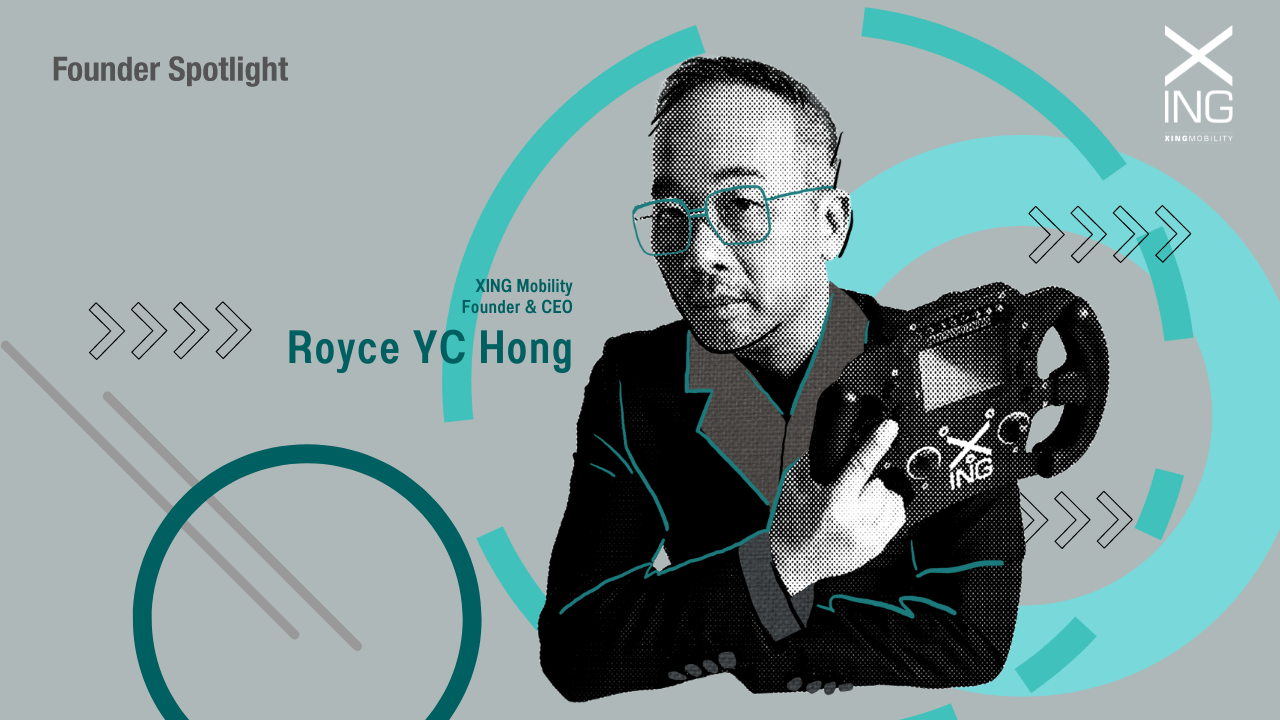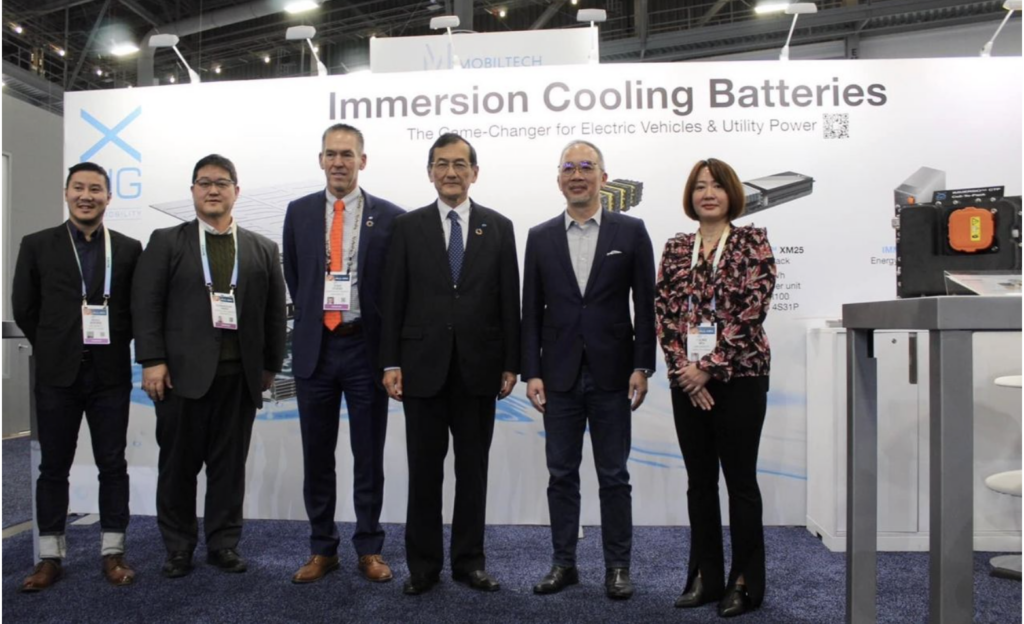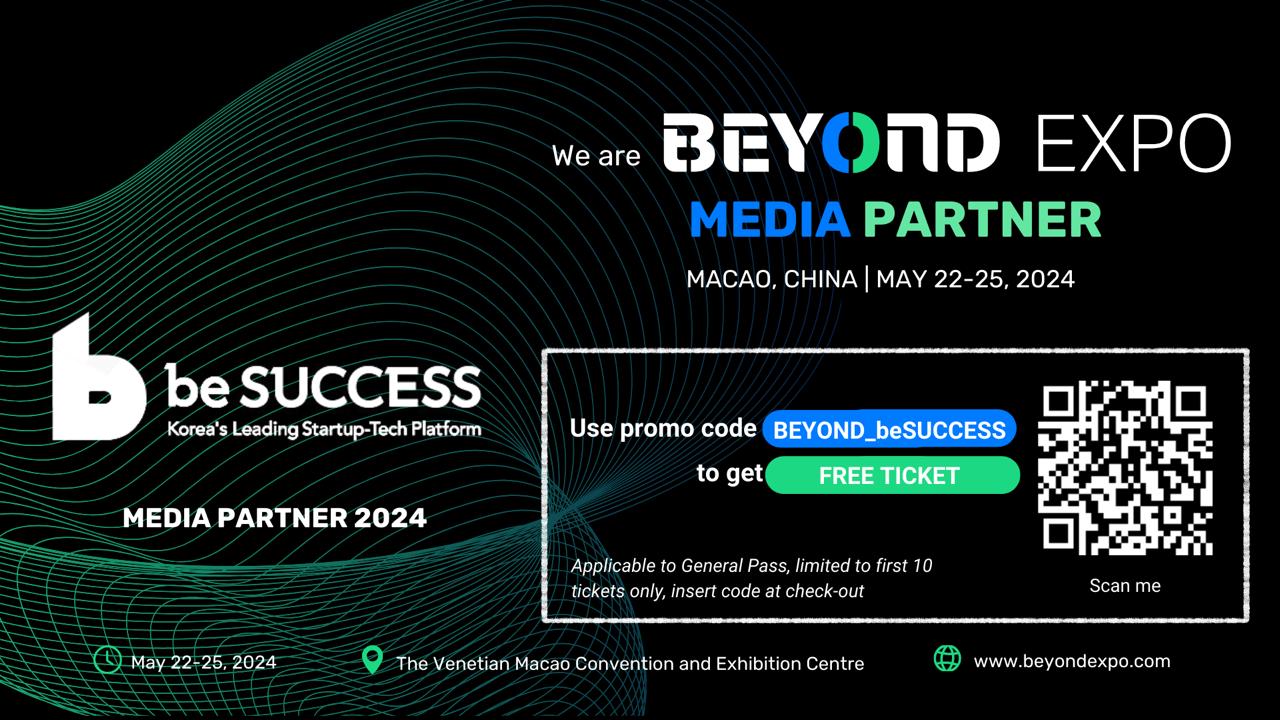AsiaTechDaily – Asia's Leading Tech and Startup Media Platform

Why would a century-old agricultural-machinery giant set its sights on a Taiwanese startup that’s only been around for 8 years?
For electric vehicle batteries, harsh weather conditions not only drain power quickly but also pose a more troublesome issue: extremely low temperatures can lead to “battery death,” rendering them unable to charge no matter how long you plug them in. In mid-January 2024, a snowstorm wreaked havoc in the United States, causing chaos at an electric vehicle charging station in Chicago. The parking lot was jam-packed with Tesla vehicles unable to charge due to the bitter cold. Rows of vehicles were left “frozen” on the roadside, creating a chilling scene reminiscent of an electric car graveyard.
Meanwhile, on the West Coast of the United States, the Consumer Electronics Show (CES) was in full swing, providing a stark contrast to the wintry conditions in Chicago. Tech giants from around the globe showcased their latest innovations, attracting industry professionals to Las Vegas to explore the cutting-edge technologies poised to shape the future. What’s particularly striking this year is the heightened buzz surrounding discussions on new energy topics. The Vehicle Technology exhibition area seemed to buzz with more energy and activity than ever before. From the excitement and fervor on-site, it’s evident that the electric vehicle revolution is unfolding right before our eyes, with “batteries” playing a central role.
“This year’s CES was a resounding success, with attendance exceeding our expectations,” remarked Royce YC Hong, founder and CEO of XING Mobility, fresh from the event. “We had the opportunity to meet with numerous automakers, and many well-informed individuals arranged visits, particularly following the news about Kubota and our collaboration.”
Who is the Kubota Group? For those not familiar with agricultural machinery, the name Kubota might not ring a bell. However, Kubota is a Japanese publicly traded company with a rich 130-year history and a global presence. It has held the title of global leader in small excavator sales for 20 consecutive years, producing 5.1 million tractors annually. Kubota engines power one million machines worldwide each year, establishing it as a dominant force in the light agricultural vehicle market globally.
XING Mobility recently garnered attention in the industry with a new round of funding from Kubota. The interest from this century-old Japanese corporation in an 8-year-old Taiwanese startup begs the question: What market gaps did Kubota identify, and which of XING Mobility’s core technologies attracted their investment?
Advantage 1: Innovative solutions for thermal management! Immersion cooling system for vehicles and battery technology that mitigates fire risks.
“We recognized from day one that the future of transportation lies in electrification,” stated Royce YC Hong emphatically. Despite the electrification trend, optimal battery thermal management remains elusive, and incidents such as battery fires in electric vehicles and energy storage systems are not uncommon. As electric vehicles become more prevalent, effectively regulating battery temperatures is becoming a pressing concern.
Conventional cooling methods primarily employ cold plates, utilizing sealed pipelines to dissipate heat generated during battery operation. However, this approach is costly and provides limited heat dissipation effectiveness due to its reliance on direct contact between the cooling pipes and battery surface.
Amidst the automotive industry’s urgent need for a verified, scalable, and cost-efficient battery thermal management solution, XING Mobility’s proprietary immersion cooling technology has emerged as a frontrunner.
As the name suggests, “immersion cooling” entails submerging batteries directly in a non-conductive engineering cooling fluid. At the 2023 Computex expo, NVIDIA CEO Jensen Huang boldly proclaimed, “Immersion cooling is the future.”
While Jensen Huang’s statement referred to server cooling, XING Mobility’s immersion cooling stands out as one of the few cooling methods tailored for high-voltage automotive applications. It has undergone rigorous testing, is poised for mass production, and is already integrated into vehicles.
“In the nascent stages of our startup, we took on the ambitious task of constructing a purely electric supercar from scratch, which brought to light the various challenges associated with high-voltage automotive batteries,” recounted Royce YC Hong. “Back then, XING Mobility scoured the globe for a suitable solution but came up empty-handed. Faced with exorbitant development costs associated with traditional cold plates, my team and I had to push the boundaries of innovation, leading us to the unconventional approach of immersing battery cells directly in cooling fluid. This technology seemed far-fetched, and many automotive manufacturers opted for more conventional development paths. We lacked resources at the time, so we had to get creative and explore every avenue for innovation.”
However, as is often the case with groundbreaking innovations worldwide, initial enthusiasm was met with financial constraints. “When we first experimented, despite the savings on cold plates, the cost of the cooling fluid was astronomical. We jokingly referred to it as being more expensive than champagne.”
Nevertheless, these initial endeavors unveiled “immersion cooling” as a game-changing technology. Not only does it effectively dissipate heat during thermal runaway in battery cells, but it also acts as a reliable safeguard against such incidents within the battery system.
Moreover, in frigid weather conditions, this method can reverse heat flow, enabling batteries to function normally in extreme cold. Furthermore, automotive batteries utilizing “immersion cooling” must meet stringent safety standards, including earthquake and collision resistance. With the cooling fluid contained and efficient heat dissipation achieved with minimal liquid, this technology emerges as a pivotal innovation in the sector.

Advantage 2: XING Mobility controls four out of the key seven layers of the electric vehicle power battery system.
Breaking down the electric vehicle power battery system reveals seven crucial layers, ranging from upstream battery raw materials to the overall vehicle integration. These layers include battery cells, modules, packs, Battery Management System (BMS), and thermal management systems. To keep pace with electrification trends, automakers must ensure all seven layers are meticulously addressed to install functional and safe batteries in vehicles.
Automakers typically have several options. They may directly engage with major battery cell manufacturers like CATL, Panasonic, or LG. However, these manufacturers primarily focus on producing battery cells and may not offer packaging and thermal management solutions. Additionally, customizing solutions for various vehicle models can pose challenges, especially for automakers with smaller order quantities.
The second option is for automakers to develop their own battery packs. For instance, Tesla introduced its proprietary battery pack for electric vehicles, while BYD unveiled the “Blade Battery,” touting its advantages in safety, longevity, and cost.
However, automakers like Tesla and BYD, which manufacture their own batteries, are in the minority. Most automakers lack expertise in power battery systems. Furthermore, regardless of the circumstances, battery thermal management remains a significant challenge. Additionally, irrespective of battery type, whether it’s a new solid-state battery or BYD’s Blade Battery, effective temperature regulation poses a significant hurdle.
Taking the “Blade Battery” as an example, its battery cells are lithium iron phosphate batteries with lower energy density, directly impacting the electric vehicle’s range. Performance also suffers in cold temperatures, with severe winter weather potentially causing a substantial decline in range. Moreover, the cooling method employed for the Blade Battery still relies on traditional cold plates, which have inherent limitations in thermal management.
XING Mobility holds the advantage in developing battery modules, packs, Battery Management Systems, and innovative cooling solutions. In essence, among the critical seven layers of the electric vehicle battery, XING Mobility has the capability to address four of them. This aspect currently stands as XING Mobility’s most compelling proposition to automakers and a pivotal factor in attracting investment from Kubota.
What was once considered a “minor matter” that nobody was willing to pursue over a decade ago has now blossomed into a significant business opportunity.
However, what appears to be a vast market opportunity now was actually regarded as a “minor matter” that nobody was willing to undertake in the past few years.
Over a decade ago, when the first generation of electric vehicles emerged, market demand was just beginning to surface. Major battery cell manufacturers, unfamiliar with automotive applications, were hesitant to allocate resources for customizing battery packs due to the limited demand. Similarly, automakers had modest requirements for electric vehicle batteries, with only Tesla actively engaged in automotive battery pack research and development.
“It’s akin to restaurants shying away from delivery services before the pandemic because there wasn’t much demand for it back then,” remarked Sherwood Hochen, Chief Strategy Officer of XING Mobility. In essence, producing battery packs was considered a minor endeavor that garnered little interest before the surge in demand for electrification.
However, what was once deemed a minor concern has transformed into a significant focal point over the past decade.
A key catalyst for this shift in the market landscape is regulatory mandates. In pursuit of net-zero carbon emissions, several countries have announced plans to phase out the sale of combustion engine vehicles. Norway, for instance, aims to halt the sale of all combustion engine vehicles, including passenger cars and commercial vehicles, by 2025. Similarly, the Japanese government has set a target to ban pure combustion engine vehicles by 2035. Moreover, mounting pressure to achieve net-zero carbon emissions has compelled large enterprises to urge their supply chains to reduce carbon footprints. These enterprises, with substantial scale, are increasingly pushing for electrification of engineering vehicles, construction equipment, and even concrete mixers used in manufacturing processes.
Thanks to XING Mobility’s early foray into automotive battery research, prior development of a pure electric supercar, and accumulation of commercial vehicle clients in recent years, the company has amassed practical experience in developing automotive battery packs well before the surge in market demand. Furthermore, in recent years, XING Mobility has diligently optimized its cost structure. Consequently, when market demand surged, XING Mobility’s solutions became more cost-effective compared to their initial development phase.
“In reality, automakers aren’t solely pursuing immersion cooling technology; what they seek is a readily available battery system primed for mass production and subjected to rigorous safety and quality testing,” emphasized Royce YC Hong confidently. With only a handful of companies globally capable of meeting the stringent requirements for high-voltage automotive batteries, advanced safety thermal management technology, mass production capacity, and customization according to customer specifications, “we should be among the select few,” he added. “It’s not just about aligning products with the market; it’s about the convergence of technology and market demands.” The outlook of automakers has undergone a remarkable shift, evolving from viewing advanced battery technology as a mere “nice to have” to an indispensable “must-have.”
In its journey thus far, XING Mobility has secured several major clients, including Kubota and Nordic Booster, a prominent energy company in Northern Europe. Concurrently, the company is actively diversifying its applications beyond vehicles, venturing into the energy storage market and securing an order from Remotek Corporation, a leading provider of energy storage systems in Taiwan. Looking ahead, XING Mobility aims to expand its scope beyond commercial vehicles to include small cars and passenger vehicles.
The electric vehicle revolution underscores the importance of superior battery technology, positioning XING Mobility to capitalize on market trends after persevering for eight years.
XING Mobility’s humble beginnings in a small tin shed in Taishan, New Taipei City, have blossomed into a team of a hundred individuals, with key clients firmly established in the industry. Despite facing formidable challenges, the company now stands at the precipice of market growth. In the future, XING Mobility will gradually transition from its startup identity towards a more corporate direction.
Reflecting on the eight-year entrepreneurial odyssey, Royce YC Hong’s initial endeavor of building a pure electric supercar fueled by a passion for automobiles paved the way for the development of immersion cooling technology, a pivotal innovation in the company’s journey.
As Steve Jobs, the visionary founder of Apple, famously remarked, “You can’t connect the dots looking forward; you can only connect them looking backwards.” Royce YC Hong reflected, “Looking back now, everything seems to have connected seamlessly. Thankfully, neither I nor the team gave up during these eight years.” He added, “It’s also fortunate that, at that time, we possessed the somewhat audacious courage and wild dream of building an electric supercar. Without that unwavering determination, XING Mobility wouldn’t have progressed to its current stage.”
The global electric vehicle industry is on the cusp of a tremendous opportunity, witnessing a surge in market growth. Those equipped with advanced battery technology will undoubtedly lead the charge. Royce YC Hong expressed confidence that in the not-too-distant future, numerous electric vehicles on the roads will proudly bear the label “Powered by XING.” He stated, “I firmly believe this future will soon become a reality.”
This article is part of a partnership with Cherubic Ventures. Founded in 2014, they are an early-stage venture capital firm that’s active in both the US and Asia, with a total AUM of 400 million USD. Focusing on seed stage investments, Cherubic aims to be the first institutional investor of the next iconic company and back founders who dare to dream big and change the world.





